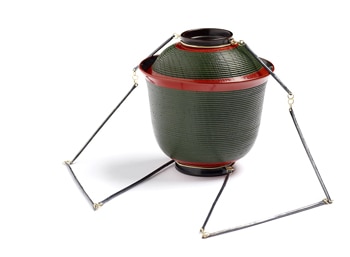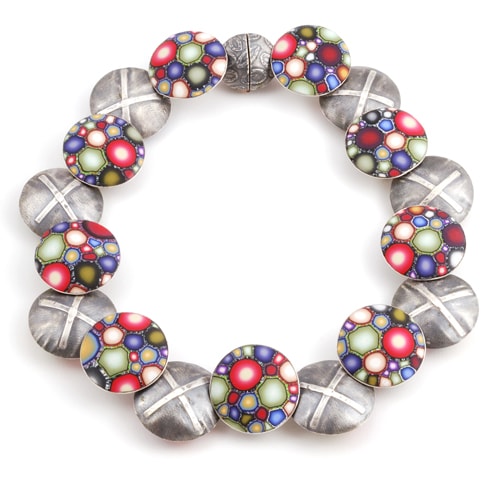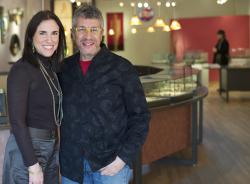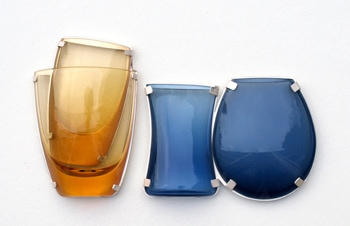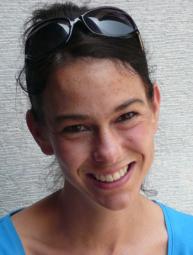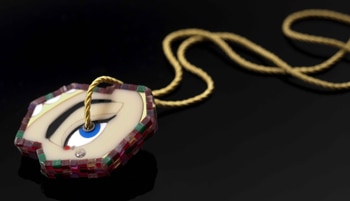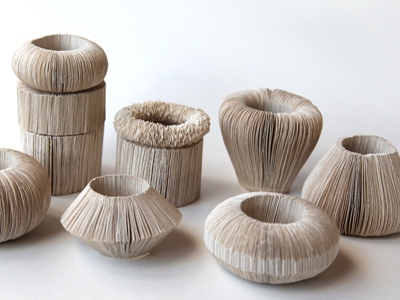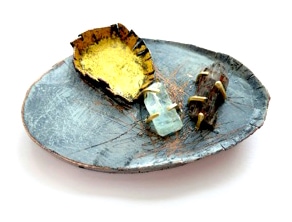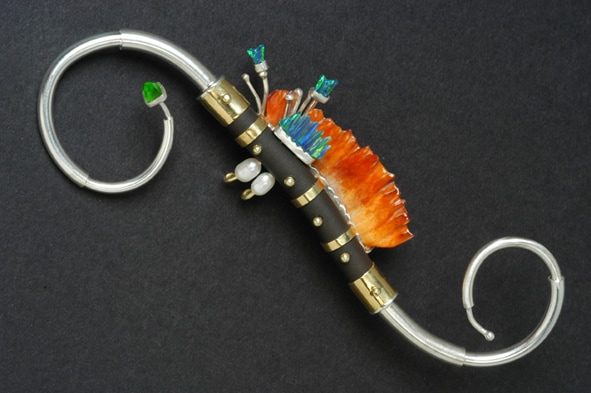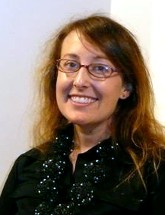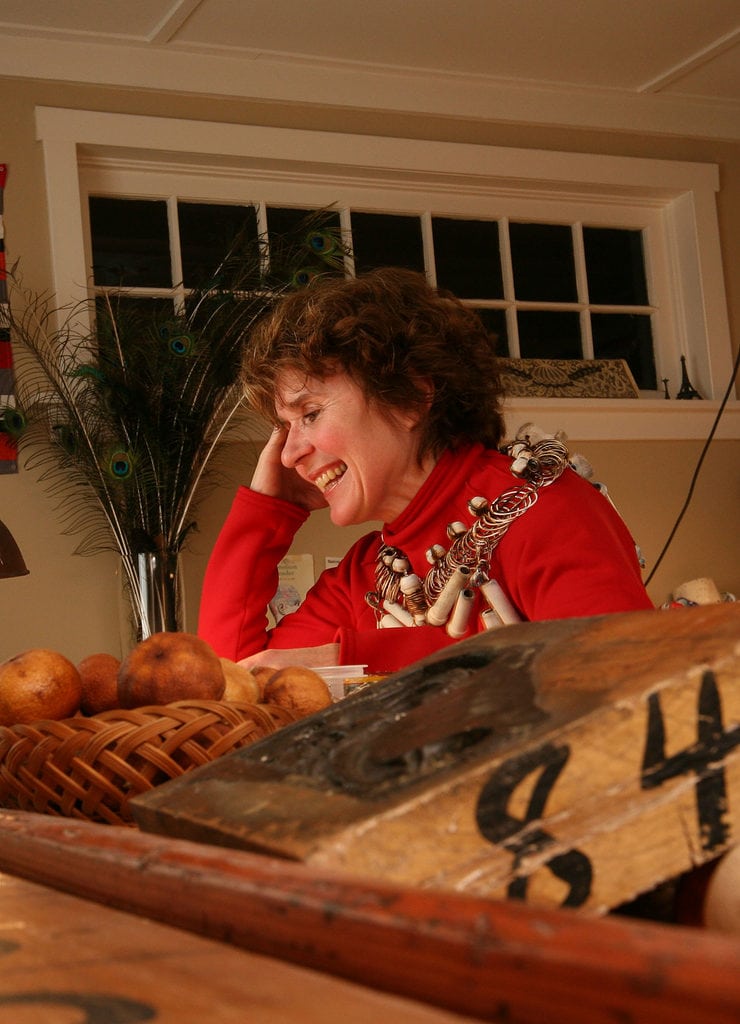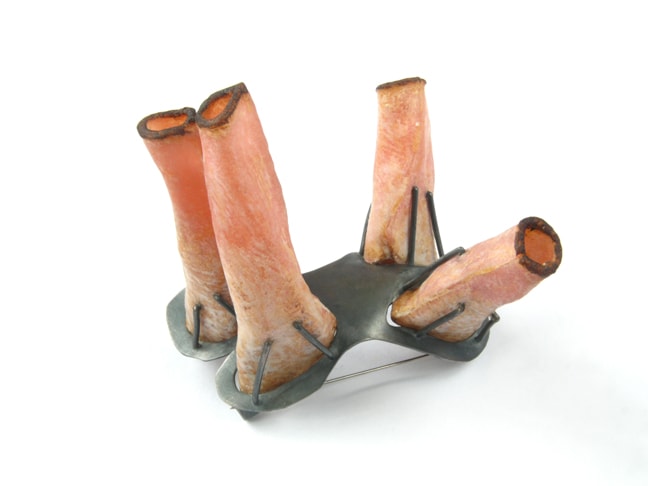Patti Bleicher and Eileen David started Gallery Loupe in Montclair, New Jersey, United States, six years ago. They show a roster of both established and emerging international artists and are interested in furthering the dialogue that contemporary jewelry evokes. In February they asked Kiff Slemmons, an established American artist, to show her most recent work in an exhibition called Huesos. I caught up with Kiff and asked her a few questions about her work and her interests.
 Susan Cummins: Kiff, I know you have been working with artisans in Oaxaca, Mexico for the past ten years and that these paper pieces represent work you did with them. Please tell me something this project and the resulting work.
Susan Cummins: Kiff, I know you have been working with artisans in Oaxaca, Mexico for the past ten years and that these paper pieces represent work you did with them. Please tell me something this project and the resulting work.
Kiff Slemmons: These pieces emerged from an art residence at Arte Papel Oaxaca. The artist and members of the atelier did the work together. Early pieces referenced African jewelry with discs built up into sculptural bead forms. Later pieces exhibit the techniques of folding, cutting and hollow-punching, rolled and formed paper pulp. The atelier is dedicated to ‘reviving the pre-Columbian tradition of making paper from natural fibers.’ The result of this project is a collection of paper jewelry, which is highly sculptural and utilizes indigenous plants, fibers, natural and synthetic dyes.
Talking about paper in Oaxaca involves countering assumptions about the material, its fragility versus strength, the metaphoric implications of paper in this regard, in relation to books and the culture at large. What paper meant in pre-contact culture in Mexico, its magnified significance after conquest and its current place in culture today. How I came to work as I did there means looking at my previous work, how it might have led to such a project which involves a kind of world view through jewelry and writing. My work is really not technique determined, even with the paper. It’s ideas that interest me first and the possibility of being poetic in a visual language.
Patti Bleicher and Eileen David started Gallery Loupe in Montclair, New Jersey, United States, six years ago. They show a roster of both established and emerging international artists and are interested in furthering the dialogue that contemporary jewelry evokes. In February they asked Kiff Slemmons, an established American artist, to show her most recent work in an exhibition called Huesos. I caught up with Kiff and asked her a few questions about her work and her interests.
 Susan Cummins: Kiff, I know you have been working with artisans in Oaxaca, Mexico for the past ten years and that these paper pieces represent work you did with them. Please tell me something this project and the resulting work.
Susan Cummins: Kiff, I know you have been working with artisans in Oaxaca, Mexico for the past ten years and that these paper pieces represent work you did with them. Please tell me something this project and the resulting work.
Kiff Slemmons: These pieces emerged from an art residence at Arte Papel Oaxaca. The artist and members of the atelier did the work together. Early pieces referenced African jewelry with discs built up into sculptural bead forms. Later pieces exhibit the techniques of folding, cutting and hollow-punching, rolled and formed paper pulp. The atelier is dedicated to ‘reviving the pre-Columbian tradition of making paper from natural fibers.’ The result of this project is a collection of paper jewelry, which is highly sculptural and utilizes indigenous plants, fibers, natural and synthetic dyes.
Talking about paper in Oaxaca involves countering assumptions about the material, its fragility versus strength, the metaphoric implications of paper in this regard, in relation to books and the culture at large. What paper meant in pre-contact culture in Mexico, its magnified significance after conquest and its current place in culture today. How I came to work as I did there means looking at my previous work, how it might have led to such a project which involves a kind of world view through jewelry and writing. My work is really not technique determined, even with the paper. It’s ideas that interest me first and the possibility of being poetic in a visual language.
 Caroline van Hoek in Brussels, Belgium, has had her gallery for five years. The storefront she occupies was once a grocery store and the original awning still refers to Fruit and Legumes. She has participated in a number of high profile fairs like Design Miami and has tried to expose art jewelry to new audiences. Her show in April 2012 with Ulrich Reithofer, an Austrian living in Amsterdam, presented a full and rich range of his latest work. Ulrich took a while to get back to me with answers to my questions and apologized with a song by F R David called ‘Words Don’t come Easy.’I think you will find that his words might not come easy but they are pretty damn poetic.
Caroline van Hoek in Brussels, Belgium, has had her gallery for five years. The storefront she occupies was once a grocery store and the original awning still refers to Fruit and Legumes. She has participated in a number of high profile fairs like Design Miami and has tried to expose art jewelry to new audiences. Her show in April 2012 with Ulrich Reithofer, an Austrian living in Amsterdam, presented a full and rich range of his latest work. Ulrich took a while to get back to me with answers to my questions and apologized with a song by F R David called ‘Words Don’t come Easy.’I think you will find that his words might not come easy but they are pretty damn poetic.